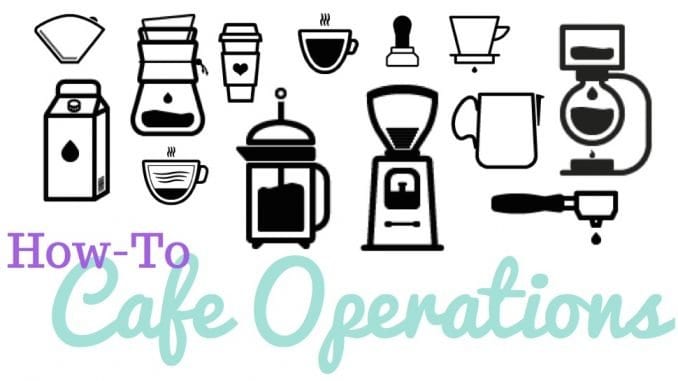
We took a week off to bring you spooky stories behind the bar, but we’re back with our latest installment of our How To series, written by our online editor, Ashley Rodriguez. In the last few posts, she’s talked about various ways to identify and implement different tools to help your café run as efficiently as possible. You can learn more about the series and read part one here, part two here, and part three here.
Multitasking is hard. In fact, most studies show that multitasking is a myth: it’s not how we process a lot of information at once. Instead, what our minds do is switch from task to task, and the key to running a café, especially during high-volume times, is making sure that employees can move from task to task easily. In this edition of my How To series, I’ll talk about ways in which you can help employees switch from task to task easily and without fuss.
- Make a schedule
When I think of the tasks I have to do behind the bar, I try not to think of them as a list, but instead I try to fit them together on a schedule. What’s the difference? Scheduling things means I’m taking into account not just the best time to do the thing I have to do, but how long it’ll take me to do it and the time constraints associated with it. Something I see new baristas do all the time is look at a closing list and do things from the top of the list to the bottom, but what you should be doing is looking for the things that’ll take the longest and start from there. The first thing I always do when, let’s say the doors shut at the end of the day, is begin soaking things that need to be soaked (like portafilters) and running cleaning cycles on my coffee urns. Why? Because those things take the longest amount of unsupervised time.
I know I have to allot at least fifteen minutes to clean our urns, which requires running three hot water cycles on our Fetco. If I start cleaning the urns right at 6:00 (when the café I work at closes), that means they’ll be done by 6:15. For my café, that’s enough time to do all the other things I need to do around the café that require my focus or physical presence, like counting the register or mopping the floors. Scheduling your close (or any part of your shift) allows you to see the shift from a larger scale and fit things together in a way that makes sense.
- Get a person’s entire order before beginning any part of their order, and then queue it up accordingly.
This helps with scheduling ”let’s say someone orders three things: a coffee, a latte, and a bagel (let’s assume it’s toasted with something on it like cream cheese). First, if you hear just the coffee part, you might go and do that and then a person might take the coffee and go fix it up, but the line is stalled because that person still needs to order two more things. But secondly, and more importantly, asking for everything allows you to queue a person’s order. Using the example above, the thing that’ll take the longest is the bagel, so you should start there. Get the bagel toasting, and then attend to the other parts of the order (I’d argue that the coffee should be next, then the latte, so the customer has something in her hand immediately, but it depends on how your café is laid out, too).
- Pair your equipment together
One thing that helps me serve customers in my café is that the register is right next to the steamwand. Why? Because I don’t need a lot of focus to steam milk, so I can jump to the register and take orders. Our Square register is also fixed in place, which makes it possible for me to keep one hand holding a milk pitcher while one hand is swiping a credit card (I’m still working on how to make change when a customer gives me cash). At the very least, I can put someone’s order into the register, finish the drink I’m steaming, and jump back to the next person’s order quickly or give my coworker a list of tasks to work on because the order is in register and they can see what’s next.
Try to find those loops in your service plan. One place I do need a lot of focus is pulling shots, so we have our grinders in a corner that doesn’t face customers. But there’s some dead time when you’re making pourovers, where perhaps a barista could maybe restock lids or put more milk in a carafe. For us, it’s next to our retail shelf, so we can talk to customers about what coffees we have and help someone pick a coffee for home.
So far, I’ve talked a lot about systems and behaviors, but in the next edition, I want to shift to a bigger picture issue ”hiring. Hiring is tough, but it’s especially tough if you don’t have a keen sense of what skills you’re looking for. Next week, we’ll talk more about what to look for when you hire staff.

